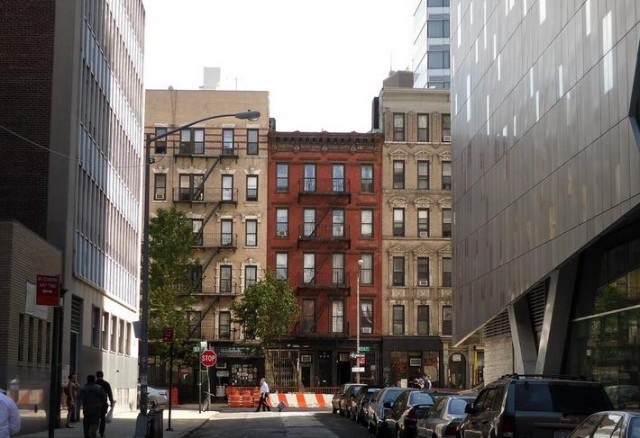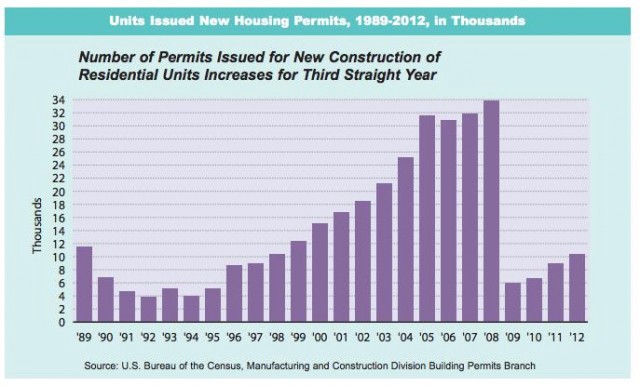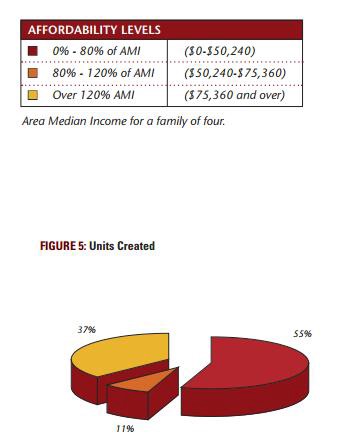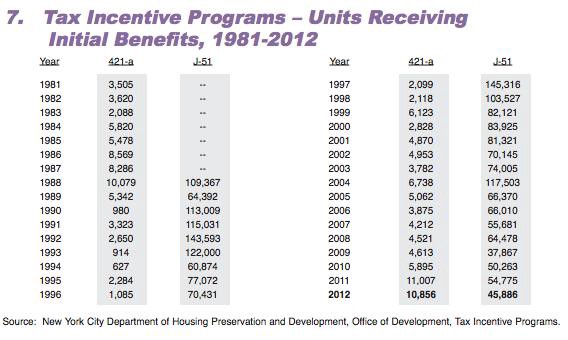Mayor Mike's Legacy: What *Really* Happened To Affordable Housing In New York City

Largely today’s New Yorker profile of Mike Bloomberg makes me remember there are lots of things we’re going to miss about the lil’ Bostonian billionaire that could! In particular, the attitude, and also the humongous amount of money he’s dumped into various institutions and projects in the city. We’re also going to miss him when we forget in a couple years that he’s largely to blame for the forthcoming budget crisis. But.
“No one has done more to help the poor than we have.” The city, he insisted, “created three hundred and fifty thousand jobs in tourism. These are entry-level jobs.” In his twelve years as mayor, it built “one hundred and sixty-five thousand units of affordable housing.” And by improving education the city addressed “one of the keys to getting out of poverty.” Yet a report issued by one of his own agencies, the Center for Economic Opportunity, revealed that by the end of 2011 more than a fifth of New Yorkers were living below the poverty line and another quarter just above it. These figures will rise, the report added, especially if federal spending declines, as expected.
This spring, the Fiscal Policy Institute, a progressive nonprofit research organization, issued an even grimmer report, concluding that there has been “no meaningful reduction in poverty” in the city in thirty years.
So here in the New Yorker is a thing, I am sorry to say, that is absolutely untrue. It’s this part — “In his twelve years as mayor, it built ‘one hundred and sixty-five thousand units of affordable housing.’” No. He/it did not. Do you want to learn about housing in New York City, and why that’s not true? Let’s roll! Don’t be alarmed, we’re going to do this very slowly, even the math-afraid can follow along.
It’s true that Bloomberg’s New Housing Marketplace Plan (PDF) calls for the creation and preservation of 165,000 units of affordable housing by 2014. Here’s how the administration put it:
At the end of my first year in office, we announced the New Housing Marketplace Plan, the City’s largest affordable housing program since the Koch Administration. The plan pledged to create or preserve 65,000 units of affordable housing by 2008. In April of 2005 we increased that commitment to 68,000 units…. [W]e are now expanding the original five-year New Housing Marketplace Plan to a 10-year plan to create and preserve 165,000 units of affordable housing.
That’s where the 165,000 number comes from.
You will notice that the word “built” doesn’t appear. Whenever they drag out these numbers, create is always coupled by “preserve.” People get fuzzy about this, and development is complicated, and then, something totally untrue gets passed around.
Let’s pull back!
You know what an apartment is, right? Kidding: not that far back.
Almost 70% of New York City dwelling units now are rentals. That’s about double the national average. All told, there are about 3.3 million buildings in which people live in New York City.
So, right. Math tells us there are about 2.1 million rental units. Around 40% of those now are unregulated, free market — that’s around 900,000. About 45% are rent stabilized. (Fewer than 2% are rent controlled, so you can pretty much just ignore it when people prattle on about rent control and what it means.)
There was, as you might recall, a recession! Here’s one amazing thing that happened in the recession.
There were 34,000 permits issued for new residential construction in 2008. In 2009? The number of permits dropped to about 6000. And it didn’t really recover. 2010 and 2011 barely grew. In 2011, fewer than 997 buildings received permits, for a total of 8,936 units.

In 2012, still, the numbers had barely rebounded to 1998 levels — just about 10,000 permits. Basically, if you were tortured by pile-driving and construction-banging in the mid-00s, you likely no longer are. According to the city, “the number of buildings demolished between 2005 and 2007 alone was almost triple the number demolished” in all of the 90s. Then it dropped; only 1,129 buildings were demolished in 2011, which was essentially stable through 2012.
One thing that’s very hard to do is to create new affordable housing when there is barely any housing being created at all.
Now, Koch, for instance, actually created around 200,000 units of affordable housing. But one thing about affordable housing is that it expires. “421a” — created in 1971 — is the name for the program that used to give tax exemptions for somewhere usually between 10 and 25 years. But after that, the affordable housing rolled into market. (Here’s an interesting story about that.)
There were recent improvements made in the affordable housing credit scheme. For one thing, they closed down the “off-siting” of affordable housing. It used to be that you could build a fancy apartment in Manhattan and affordable housing in another borough, and you’d still get the tax credit. Also they extended the period that you had to keep the housing affordable to 30 years.
But what these “affordable housing” incentives mean is that affordable housing is constantly rolling off the books.
As well, we need to ask: what is affordable housing anyway? In fact, just over half of created affordable housing is for poor people — households under $50,000 a year. Actually 37% of this created affordable housing is for households who are 120% or more of Area Median Income ($75,360 for a family of four).

(We won’t get into the whole thing about how NYC has dealt with homelessness.)
(But, a sidebar: there was also the J-51 plan. That’s when you would get a tax abatement or exemption for renovating. That program ended in 2011. That’s good! In fiscal year 2013 alone, J-51 will cost the city $251.3 million in lost taxes on just 1,181 buildings. The trade-off was that any apartment renovated under the plan had to enter rent regulation while the building was receiving the benefits.)
Since 2003, actually, the city has only “funded” 100,000 units of affordable housing — except most of this is retention. Overall, fully 66% of the units of affordable housing expected to be created by the time Bloomberg leaves office are actually “retention,” not creation. (By the end of the fiscal year of 2011, 65% of the affordable housing “gain” was just retention.) Absolutely it costs a ton of money to retain affordable housing. But it’s far, far harder to build it. And that hasn’t happened.
As of March 2013, HPD and HDC have financed almost 145,000 units of housing under the New Housing Marketplace Plan, almost 88% of the total planned. The City has also shifted from its priority on new construction, and now anticipates that 68% of units by 2014 will be preservations, up from the 44% anticipated in the initial plan.
So right. (PDF) The Bloomberg administration said it would create new affordable housing. It realized it couldn’t, and focused its efforts on retention. That’s understandable! This is all incredibly complex and expensive and difficult to manage, and honestly the people who work with housing in New York City are pretty much heroes and must want to tear out their hair everyday.

That big jump in the last two years? That’s people hustling trying to make a quota.
And also… there’ll be 9 million New Yorkers by 2030; there are about 8.3 million now. Between 2005 and 2008, New York City only had a net gain of 65,000 housing units. Those numbers don’t match up well.
Photo of New York City by Doug Kerr.
